
- Subject:
- Applied Science
- Biology
- Life Science
- Material Type:
- Module
- Date Added:
- 07/10/2017

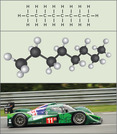
By the end of this section, you will be able to:Define “energy”Explain the difference between kinetic and potential energyDiscuss the concepts of free energy and activation energyDescribe endergonic and exergonic reactions

By the end of this section, you will be able to:Define “energy”Explain the difference between kinetic and potential energyDiscuss the concepts of free energy and activation energyDescribe endergonic and exergonic reactions
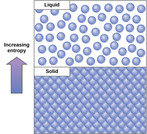
By the end of this section, you will be able to:Discuss the concept of entropyExplain the first and second laws of thermodynamics

By the end of this section, you will be able to:Discuss the concept of entropyExplain the first and second laws of thermodynamics
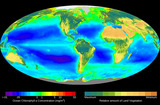

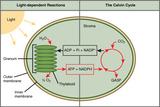
By the end of this section, you will be able to:Explain the relevance of photosynthesis to other living thingsDescribe the main structures involved in photosynthesisIdentify the substrates and products of photosynthesisSummarize the process of photosynthesis

By the end of this section, you will be able to:Explain the relevance of photosynthesis to other living thingsDescribe the main structures involved in photosynthesisIdentify the substrates and products of photosynthesisSummarize the process of photosynthesis

By the end of this section, you will be able to:Explain how plants absorb energy from sunlightDescribe short and long wavelengths of lightDescribe how and where photosynthesis takes place within a plant

By the end of this section, you will be able to:Explain how plants absorb energy from sunlightDescribe short and long wavelengths of lightDescribe how and where photosynthesis takes place within a plant

By the end of this section, you will be able to:Describe the Calvin cycleDefine carbon fixationExplain how photosynthesis works in the energy cycle of all living organisms

By the end of this section, you will be able to:Describe the Calvin cycleDefine carbon fixationExplain how photosynthesis works in the energy cycle of all living organisms



By the end of this section, you will be able to:Describe the four major types of lipidsExplain the role of fats in storing energyDifferentiate between saturated and unsaturated fatty acidsDescribe phospholipids and their role in cellsDefine the basic structure of a steroid and some functions of steroidsExplain the how cholesterol helps to maintain the fluid nature of the plasma membrane

By the end of this section, you will be able to:Describe the four major types of lipidsExplain the role of fats in storing energyDifferentiate between saturated and unsaturated fatty acidsDescribe phospholipids and their role in cellsDefine the basic structure of a steroid and some functions of steroidsExplain the how cholesterol helps to maintain the fluid nature of the plasma membrane

This lesson aims to teach students the difference between food webs and food chains, as well as how toxins in our environment affect large predators through biomagnification.
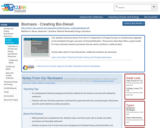
This detailed chemistry lesson from the U.S. Department of Energy focuses on transforming vegetable oil into biodiesel through a process of transesterification. The process described offers a good model for many chemical reaction processes that are used to produce a viable product.

In this lab activity students generate their own biomass gases by heating wood pellets or wood splints in a test tube. They collect the resulting gases and use the gas to roast a marshmallow. Students also evaluate which biomass fuel is the best by their own criteria or by examining the volume of gas produced by each type of fuel.